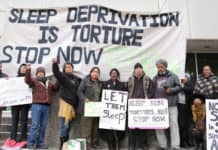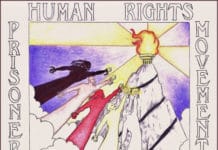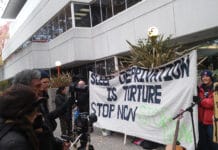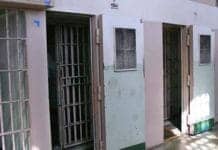A call for a California government contract with our families and communities
by James Baridi Williamson
Commemorative note: A solidarity salute is sent in memory of the three fellow California hunger strikers who died during our 2011 collective protest against CDCR torture. Our hearts go out to their families. We will not stop our efforts until CDCR stops the torture!
First and foremost, a solidarity salute goes out to all the courageous people who participated in, supported and continue to stand in solidarity with the recent 2011 hunger strikers and their families, relatives, friends and concerned citizen supporters. A salute is also extended to those like-minded, spirited ones across this prison nation and world, especially those prisoners in solitary confinement segregation dungeons, and our mutually harmed families, relatives etc.
 On Aug. 14, 2009, I contacted Legal Services for Prisoners with Children attorney Carol Strickman and requested that they survey the effects of prolonged isolation upon our class and families and communities. In July of 2011, a much overdue survey was completed and a report was prepared by LSPC, entitled, “Cage within a Cage: A Report on Indeterminate SHU Confinement and Conditions.”
On Aug. 14, 2009, I contacted Legal Services for Prisoners with Children attorney Carol Strickman and requested that they survey the effects of prolonged isolation upon our class and families and communities. In July of 2011, a much overdue survey was completed and a report was prepared by LSPC, entitled, “Cage within a Cage: A Report on Indeterminate SHU Confinement and Conditions.”
The report not only provided a look at the human and social harm caused to California’s indeterminate SHU class of prisoners by the state Department of Corrections and Rehabilitation’s (CDCR’s) policies, practices and conditions of long term solitary confinement, extreme isolation, sensory deprivation, dehumanization (pages 1-17), which is now the primary focus of the recent class action lawsuit, Ruiz vs. Brown, et.al., filed in U.S. District Court of Northern California.
The report also provided a look at the devastating effect of this prolonged isolation on the prisoners’ families and communities (pages 14-16). As can be seen from the LSPC report, CDCR’s torture has reached beyond just the targeted California indeterminate SHU class imprisoned person and extends into the families and communities as well.
Under the report’s heading, “Impacts and Effects on Family Relationships,” at page 14, it provides:
“The results of the report illustrate how SHU placement creates a debilitating effect on the maintenance and sustenance of family relationships. One hundred percent of the individuals (63 out of 63) reported they have family, and 76.2 percent stated that they have children ranging in ages of under 10 to over 30; 22.3 percent have grandchildren. In total, 84.1 percent of respondents stated that being in the SHU has had a negative effect on those relationships” (page 14).
As can be seen from the LSPC report, CDCR’s torture has reached beyond just the targeted California indeterminate SHU class imprisoned person and extends into the families and communities as well.
Equally significant is the barrier caused by the distance from the institution to their loved ones’ residence, which affects 68.3 percent. Although the distance may be beyond their control, indeterminate prisoners in the SHU are unable to get hardship transfers.
A call for a contract with California’s poor, Black and Brown communities
To save half the current cost of solitary confinement, California can transfer prisoners from SHU to general population prisons closer to prisoners’ homes, and the funds saved can be rediverted to benefit communities. Since the majority of indeterminate SHU class prisoners are from poor, Afrikan/Black (New Afrikan) and Latino families and communities, the state of California should refocus its attention from spending billions of taxpayers’ monies to maintain one of the largest mass imprisonment systems in the U.S. and the world, and redirect the money back to the state’s residential communities.
For instance, with the state’s budget crisis continuing to worsen while it continues to pump billions into its CDCR-CCPOA guards’ budget – last reported to be $9 billion – the state, instead of spending $70,641 to house one prisoner in SHU, could transfer these prisoners out of solitary confinement to the general prison population located closest to their homes. This would cut costs to only half that amount, or $30,000 to $40,000 per prisoner.
The state could then enter into contracts with California communities, colleges etc. to educate, train and prepare their imprisoned community family residents for parole, employment and re-entry into society. The imprisoned members will join in such a beneficial contract, agreeing to work with their families and communities in this mutually beneficial effort.
But first we need to issue the CALL for this agreement!
Send our brother some love and light: James Baridi Williamson, D-34288, PBSP-SHU D4-107U, P.O. Box 7500, Crescent City CA 95532. This story was transcribed by Penny Schoner.
Editor’s note: “Cage within a Cage,” first published in 2011, was updated in 2012. The June 2012 update can be found at http://www.prisonerswithchildren.org/wp-content/uploads/Cage-Within-A-Cage.pdf. For the original July 2011 report cited here, go to http://prisonerhungerstrikesolidarity.files.wordpress.com/2011/06/2011-shu-report-2.pdf.

 Store
Store












